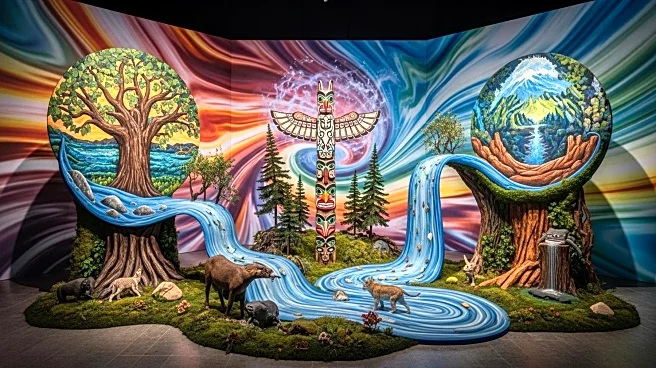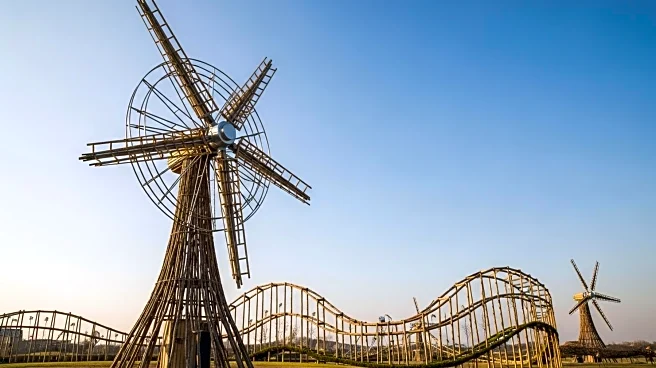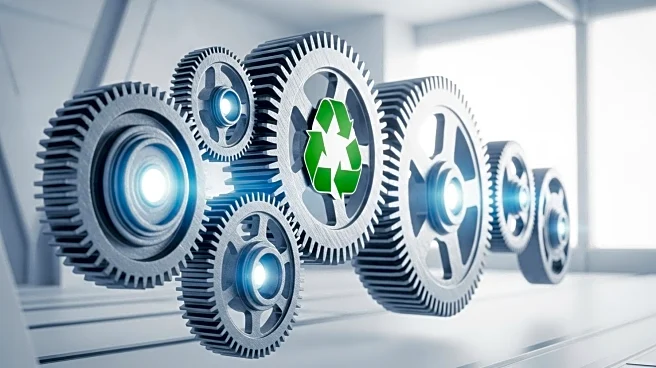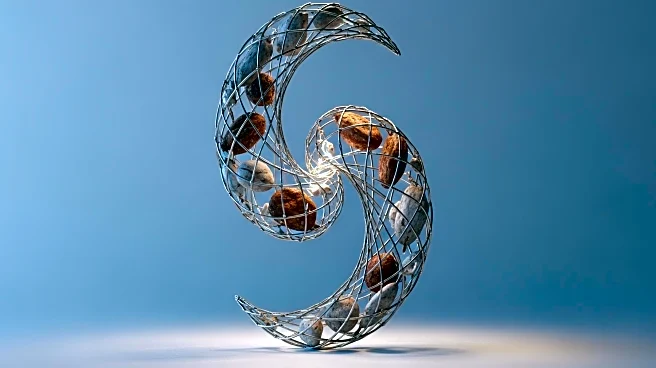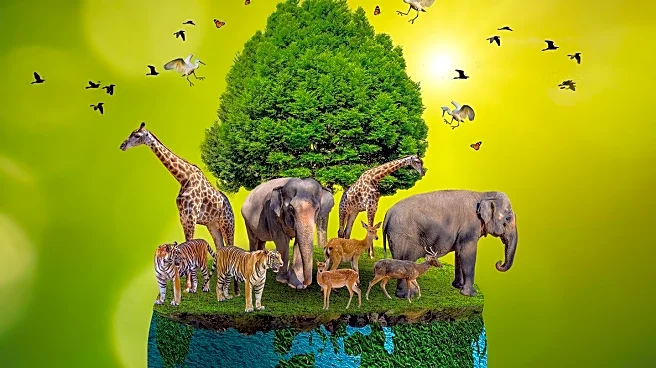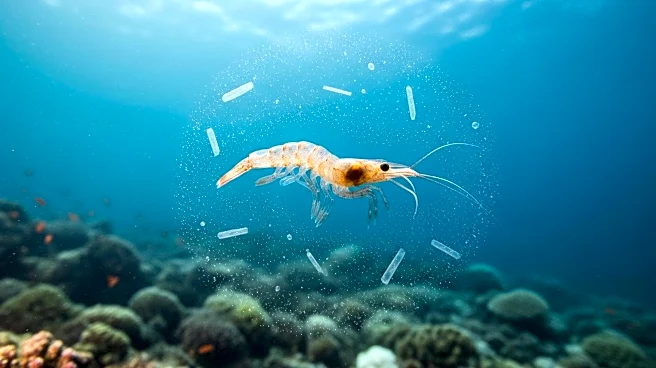What's Happening?
Máret Ánne Sara, a Sámi-Norwegian artist, has unveiled a new installation at Tate Modern as part of the Hyundai Commission. Her work, Goavve-Geabbil, consists of two interconnected sculptures made from
reindeer hides, electrical elements, and LED lights. The installation reflects the environmental challenges faced by the Sámi people due to climate change and industrial projects. Sara's art draws attention to the impact of mineral extraction and renewable energy projects on traditional lands and reindeer-herding routes. Her work emphasizes the importance of indigenous philosophy and knowledge systems in addressing global environmental crises.
Why It's Important?
Sara's installation brings to light the ongoing struggles of indigenous communities, particularly the Sámi people, in the face of environmental degradation and displacement. Her art challenges the narrative of greenwashing and highlights the need for sustainable practices that respect indigenous lands and cultures. By incorporating elements of Sámi philosophy and science, Sara's work offers alternative strategies for a more sustainable future. This installation serves as a powerful reminder of the interconnectedness of cultural preservation and environmental conservation, urging viewers to reconsider their relationship with nature and the impact of modern industrial practices.
Beyond the Headlines
Sara's work not only addresses environmental issues but also explores the spiritual and philosophical dimensions of indigenous knowledge. Her use of reindeer hides and electrical cables symbolizes the tension between traditional practices and modern industrialization. The installation invites viewers to engage with Sámi culture and philosophy, offering a unique perspective on sustainability and coexistence with nature. By presenting indigenous knowledge as progressive and relevant, Sara's art challenges stereotypes and promotes a deeper understanding of the value of cultural diversity in solving global challenges.
